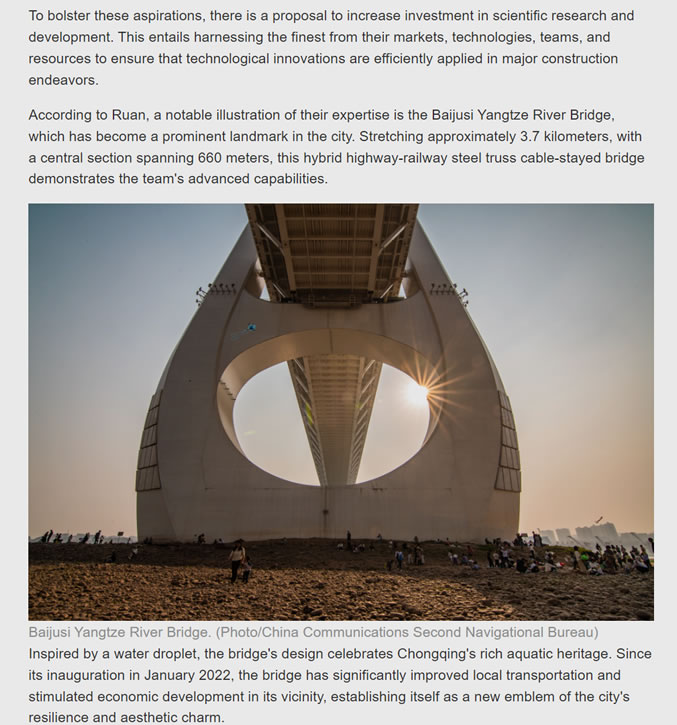西部國際傳播中心:Chongqing Embraces Future of Construction: Innovating with Green, Intelligent Technologies


Chongqing - Chongqing is undergoing a substantial effort to shift from traditional construction methods to more streamlined, environmentally friendly, intelligent, and digitally driven approaches. This transition is vital for promoting resource-efficient and eco-friendly practices and production methods within the industrial sector.
Ruan Zelian, who manages the Department of Science and Technology at China Communications Second Navigational Bureau Second Engineering Co., Ltd., shared these insights during a recent interview with Bridging News.
Ruan Zelian, manager of the Department of Science and Technology at China Communications Second Navigational Bureau Second Engineering Co., Ltd. (Photo/China Communications Second Navigational Bureau)
Ruan emphasized this strategic shift as part of a more significant effort to adopt innovative, productive forces. She underscored the significance of scientific innovation in leading this new wave of productive forces.
China Communications Second Navigational Bureau Second Engineering Co., Ltd. is a subsidiary of China Communications Construction Company Limited, specializing in engineering and construction services for navigation infrastructure projects.
The company is especially focused on advancing technology across various crucial domains: constructing longer bridges, implementing novel construction techniques, excavating tunnels through mountains, and addressing water conservation initiatives, all to advance their technological research.
To bolster these aspirations, there is a proposal to increase investment in scientific research and development. This entails harnessing the finest from their markets, technologies, teams, and resources to ensure that technological innovations are efficiently applied in major construction endeavors.
According to Ruan, a notable illustration of their expertise is the Baijusi Yangtze River Bridge, which has become a prominent landmark in the city. Stretching approximately 3.7 kilometers, with a central section spanning 660 meters, this hybrid highway-railway steel truss cable-stayed bridge demonstrates the team's advanced capabilities.
Baijusi Yangtze River Bridge. (Photo/China Communications Second Navigational Bureau)
Inspired by a water droplet, the bridge's design celebrates Chongqing's rich aquatic heritage. Since its inauguration in January 2022, the bridge has significantly improved local transportation and stimulated economic development in its vicinity, establishing itself as a new emblem of the city's resilience and aesthetic charm.
Ruan mentioned the use of BIM technology and intelligent construction techniques that helped the project team navigate the project's complexities. These innovations included digital modeling, construction based on precise molds, public display of the construction process, simulation of potential conflicts, and a traceable management system for raw materials.
In the future, the company will persist in incorporating scientific innovation and green principles into its construction projects to contribute to the city's development positively.(By Zhan Chen | Bridging News Business Managing editor:Vivian Yan)
